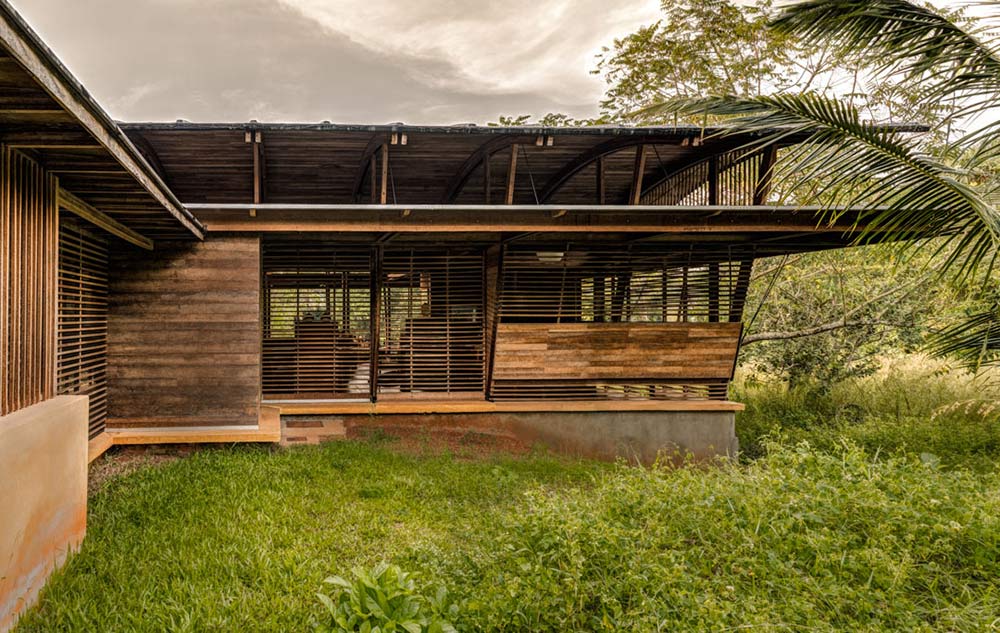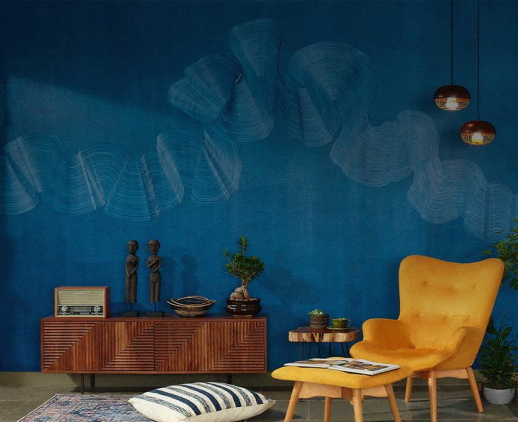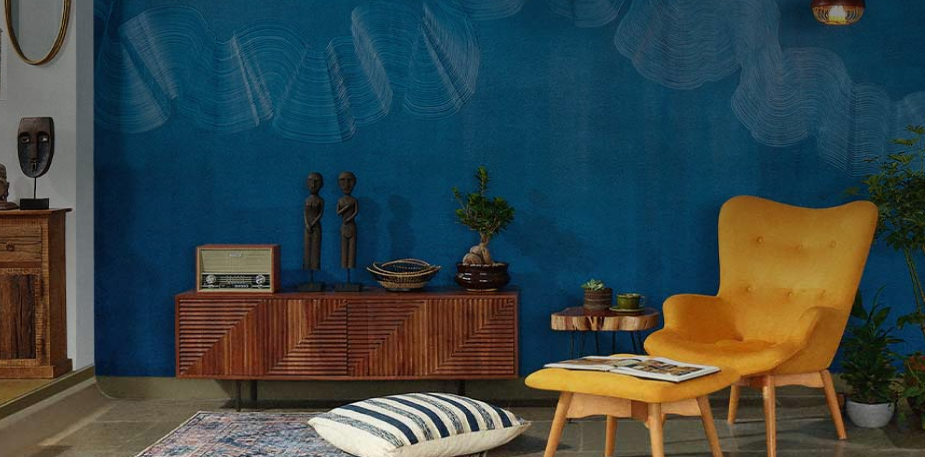Get your home interior design budget estimate
Simple and natural - minimalism in design the Gandhi way

While most of us do not associate the Mahatma with architecture and design, he has influenced generations of practitioners in India
Mahatma Gandhi was the original proponent of minimalism, rooted in the Indian way. In an essay in 2019, architect Riyaz Tayyibji analysed Gandhi’s buildings. Sabarmati Ashram was made from burnt brick, handmade tiles, and sawn timber, all sourced locally. Sevagram Ashram had walls made of “garhi mitti”, a mix of water, cow dung, wheat husk, and hay, the roof was made of bamboo matting and held up with columns of sagwan wood. The use of material and energy was limited and there was an emphasis on open and semi-open spaces. Rooted in the concepts of sustainability and frugality, Gandhi’s architecture, which was once considered rural and conservative, was in fact, modern, Tayyibji concluded.
“My room may have blank walls; and I may even dispense with the roof, so that I may gaze out upon the starry heavens overhead that stretch in an unending expanse of beauty”, Gandhi wrote in 1924, to explain what he considered art and beauty.
While most of us do not associate Gandhi with architecture and design, his focus on the “simple and natural” have influenced generations of practitioners in India, both directly, as in the works of the British-born Indian architect, Laurie Baker, and indirectly through many others.
Frugality as Indian Minimalism
In modern times, minimalism is an aesthetic choice, associated with the Japanese concept of decluttering or stripping an object or space to its bare essentials as a reaction to modern consumerism. The Scandinavian school of minimalism embraces function and comfort. What then is Indian minimalism or how is it different from the Japanese or Scandinavian interpretations? Minimalism in India has philosophical underpinnings, with frugality at its core. It harks back to our long-held tradition of simple living, as exemplified by Gandhi, it is self-sufficient, respects natural resources, and abjures attachment to luxury or overindulgence.
Frugality is a part of our everyday lives. As children we are taught by our grandparents to never throw away anything, from food to clothes, crockery, upholstery, gadgets, and automobiles, everything is recycled or repurposed. We are the country that has patented the concept of frugal innovation.
Frugality is considered a virtue and there hasn’t been a greater icon for frugal living than Gandhi. Now, as we live through a pandemic and increasing climate disruptions, a Gandhian approach to living spaces has become more relevant than ever.
Back to the Basics
One such experiment was undertaken by Abraham Thomas, a dentist from Bengaluru, who moved to his native village Koduru in Andhra Pradesh a decade ago. Here he built HutK, an alternate space with an amphitheatre and gardens, where he advocates the basic principles of sustainability through design and living. He runs a dental clinic in the village and has renovated the government school, where he sends his children to study. He has set up a millet shop and the consumption of ragi has since shot up in Koduru. He encourages the village folk to take regular walks, to apply oil and sit in the sun, and to take hot water baths, to reduce their dependence on antibiotics.

The cowdung mash smeared stage of the HutK amphitheatre with the traditional freehand muggu (kolam), at Koduru village, Andhra Pradesh. Image courtesy, Paligala Chengalrayudu
“We need to create spaces where people can be healthy,” he said, in a phone interview. He thinks the pandemic should nudge more people who have returned to their native places to find such solutions. “I wanted to show that with minimal effort, you can bring change and get people to participate in it.”
Hut K, which was built on a modest budget is a space that seems to grow out of its natural surroundings. It is made entirely of earthly material, lime, stone, mud, bamboo, and grasses from the forest. He brought the physician’s approach to design, the space is interspersed with rocks and gentle steps, so that visitors are compelled to use their knees since we are used to flat paths, which are bad for our health, he says. It is a prototype and he wants to influence others to take it up.

The staircase at Shikara House. It is made of aluminum coin sheets and cement. The perforation in the sheet allows for visibility and the garden area can be seen through it. It also allows for ventilation and is cheaper to use. Image courtesy, Shikara House
Sustainable Solutions for Minimalism
Even though minimalism may seem intrinsic to India, as part of our social and political history, we are also known for excessiveness, from our elaborate weddings and festivals to our over the top designs and aesthetics. According to architect Vinu Daniel, who is based out of Kerala, it is nearly impossible to convince people to agree to a frugal plan. “We still live in an age where a house is seen as a status symbol, rather than a necessity.” So deeply ingrained is this, that families ask him to design two kitchens, one is the show kitchen, which is never used, and the other is the actual kitchen, where the cooking takes place and which is hidden away from the rest of the house.
Daniel, who is influenced by Laurie Baker, is known for his sustainable designs and use of natural and recycled materials.
“Minimalism fails in the Indian scenario,” he says with some despair. And yet, there is a generation of Indians that does not adhere to the old maxim of more is more. One of the projects designed by Daniel last year is a hilltop home in Thiruvananthapuram called Shikara House that replicates the experience of being in the mountains, with walls made of waste material and waste wood for furniture. “Our mindsets need to change,” Daniel says.
Keeping it Local
Minimalism is also what is entrenched in the local. Like the home that architect Ini Chatterji built for his mother in Goa. Made entirely out of coconut wood, widely available in Goa, the home, which is located in a forest, does not have walls or air conditioning. “It was made with a small budget and great ambition,” he says.
When he set out to build it, the challenge was to reduce the effort required to build, to keep it simple, and use very few materials. “From my perspective, minimalism is how to do more with less. It’s like Indian cooking. You can have an elaborate recipe with 35 ingredients or you can have a recipe with five and both can be equally good.”

View of the living pavilion from the garden at Coconut House. Image courtesy, Fabien Charuau.
Gandhi had written, “I do not want my house to be walled in on all sides and my windows to be stuffed”. He meant it figuratively, to indicate a life open to an exchange of ideas. The spaces he built reflected this ethos. It may be time to bring that back.

Get Started with your interior design journey with us!
Speak to our design professionals
What’s the status of your home possession?
What’s the condition of your home/space?
Will you be living in your space during the renovation?
 Previous Question
Previous Question
Is your interior design budget over 4 lakhs?
 Previous Question
Previous Question
Book next available appointment slots with our experts!
Please Select Date and Day
 Previous Question
Previous Question

Something went wrong!
We were unable to receive your details. Please try submitting them again.

Appointment Scheduled!
Thank you for giving an opportunity to Asian Paints Beautiful Homes Service! Our Customer Experience Specialist will get in touch with you soon.
Appointment Date & time
Thank You!
Our team will contact you for further details.
What’s the status of your home possession?
What’s the condition of your home/space?
Will you be living in your space during the renovation ?
 Previous Question
Previous Question
Is your interior design budget over 4 lakhs?
 Previous Question
Previous Question
Book next available appointment slots with our experts!
DEC 2023
Please Select Date and Day
 Previous Question
Previous Question

Something went wrong!
We were unable to receive your details. Please try submitting them again.

Appointment Scheduled!
Thank you for giving an opportunity to Asian Paints Beautiful Homes Service! Our Customer Experience Specialist will get in touch with you soon.
Appointment Date & time
17 Oct 23, 03.00PM - 04.00PM











































